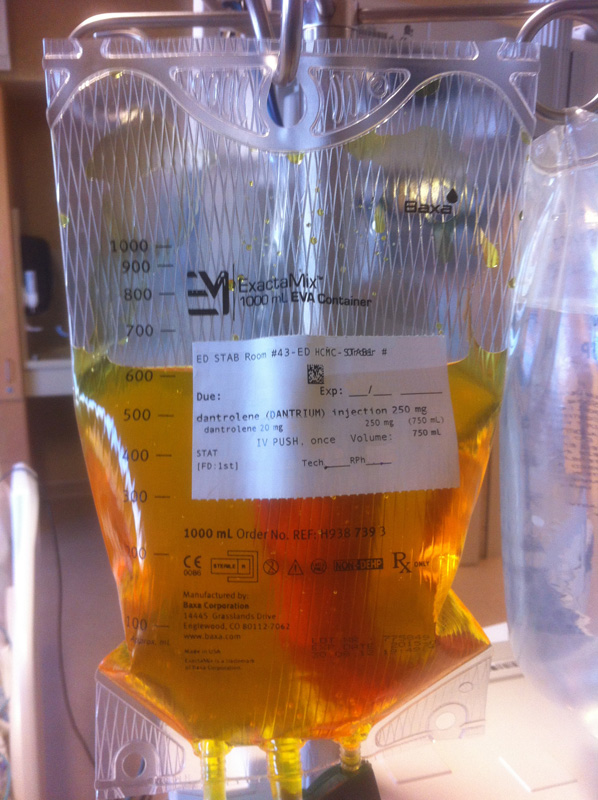Malignant hyperthermia is a life-threatening reaction to volatile anesthetics and the neuromuscular blocking agent succinylcholine. A genetic mutation in the ryanodine receptor causes sequestration of intracellular calcium and rigid muscle contractions, which requires large quantities of ATP which is is replenished by uncontrolled oxidative metabolism. The result is heat production and high body temperatures.
Dantrolene acts at the ryanodine receptor blocking the release of calcium from the sarcoplasmic reticulum, and reducing the intracellular calcium, thereby countering the effects of the malignant hyperthermia. Although, Dantrolene does not block neuromuscular transmission nor interfere with reversal of muscle relaxants, the mechanical response to nerve stimulation will be depressed.

The recommended starting dose is 2.5 mg/kg intravenously based upon the patient’s true weight rather than ideal weight, although no scientific study has addressed the difference in this dosing recommendation. Following the initial dose administration, if symptoms are not improving, continuing to administer up to 10 mg/kg is also recommended.
Dantrolene is provided as a powder and is prepared by mixing with sterile water. Sterile phlebitis may follow administration of dantrolene, and should be infused through the largest possible vein. When used with calcium channel blockers (verapamil or diltiazem), dantrolene may produce life-threatening hyperkalemia and myocardial depression. Once a patient has been successfully treated for 48 hours with intravenous dantrolene may be stopped.
Dantrolene may also be useful in life-threatening cases of dinitrophenol poisoning. The report by Siegmueller was published in Emergency Medicine Journal 2010.
First hung Dantolene 25 years ago in ICU after a pt on Tricyclic antidepressants was given Halothane gas during surgery.Not seem often, but you never forget